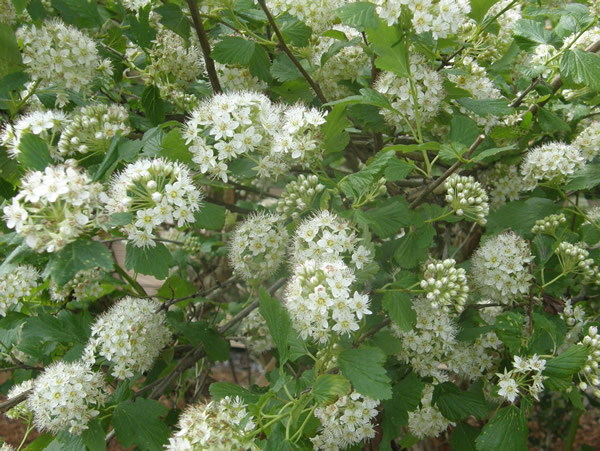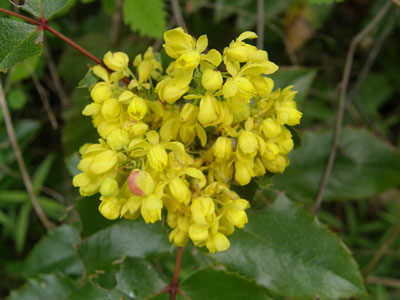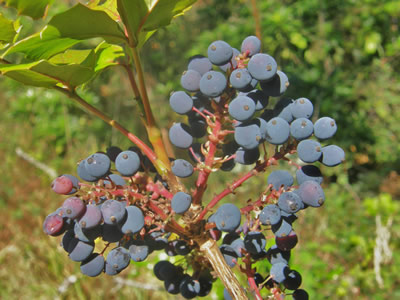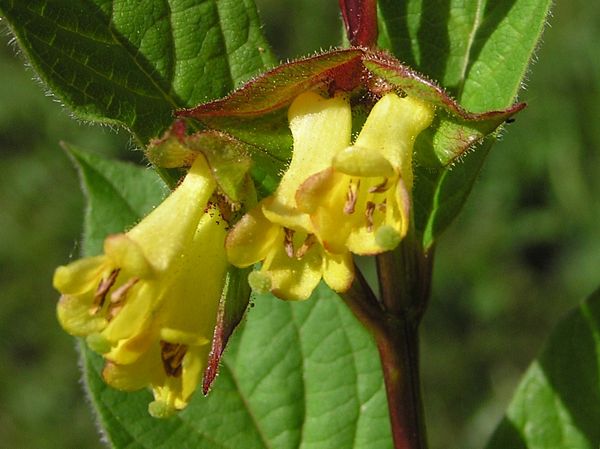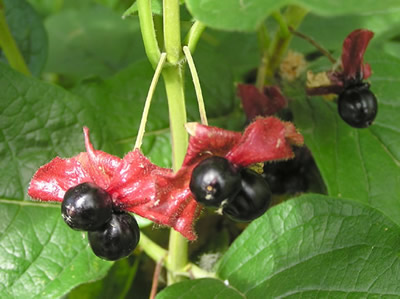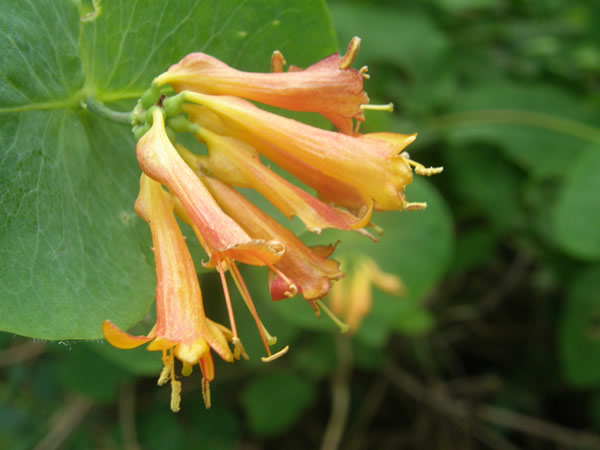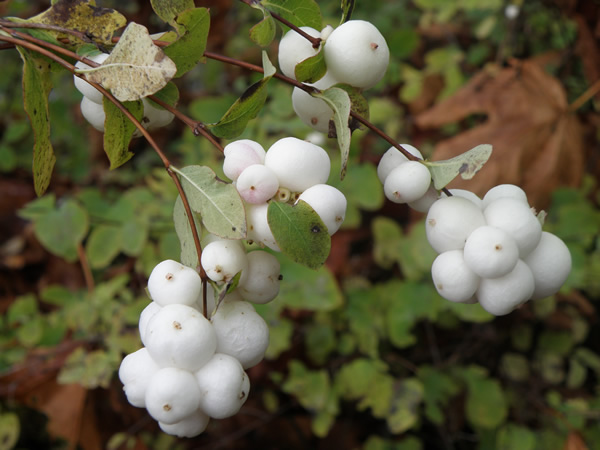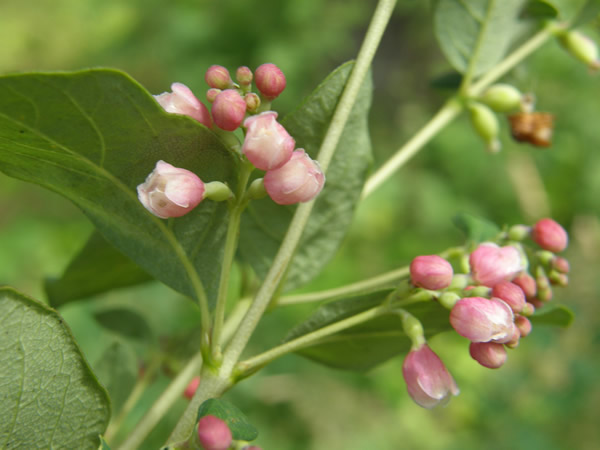|
Another wander through the woods and hedgerows to look at the various shrubs that help make these nature walks just that little bit more interesting. Through various times of the year, the flowers and the fruits of shrubs are as varied as the plants themselves.
Shrubs are generally defined as woody, multiple-stem plants.
They range in height from a few inches in alpine areas, to over ten feet tall and ten feet wide in lower, lush areas. |
| | |
|
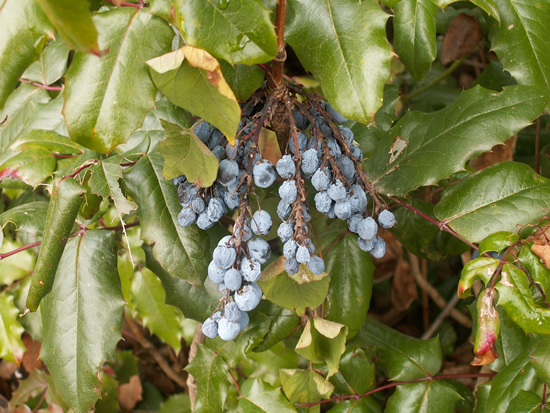 |
Oregon-grape is a beautiful shrub with holly-like leaves, but bluish berries. There are two common varieties: Dwarf or Creeping Oregon-grape, Berberis nervosa, and Tall Oregon-grape, Mahonia Aquifolium.
Oregon-grape is a well-known herbal medicine, first made available in 1886 for skin problems. That drug company is still operating today. |
|
| |
|
__ |
|
The flowers and the fruit of the two species are very much the same.
The fruits are not at all like grapes, but are edible but sour.
Oregon-grapes are found along the Pacific Northwest and east
into parts of Alberta and New Mexico. |
| | |
|
|
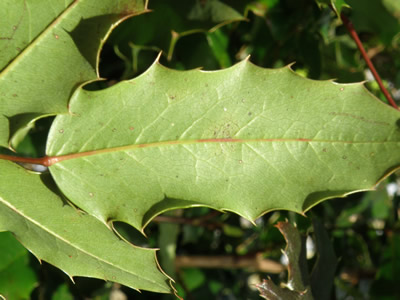 |
|
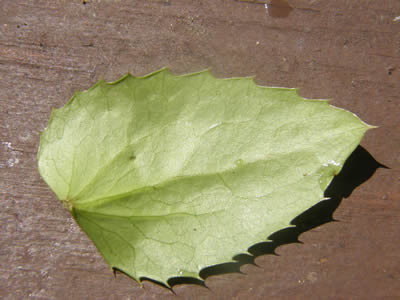 |
The two varieties can be distinguished by looking at the underside of the leaves.
The fish-bone type of leaf on the left is the Tall Oregon-grape with the pattern of the Dwarf plant is on the right. |
| | |
|
|
| |
Black Twinberry, Lonicera involucrata, is another lovely shrub with interesting yellow flowers. |
| | |
|
|
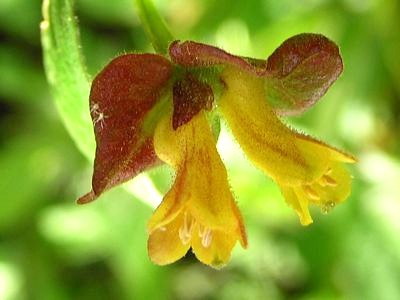 |
|
|
Black Twinberry gets its common name from the small black berries that are produced.
The "twin" part of the name refers to the sets of two flowers that produce two berries each. |
| | |
|
|
|
Orange Honeysuckle, Lonicera ciliosa, is a sprawling, trailing shrub that will use other plants in the area to climb on to and over and use them as supports. The tube-like flowers are very attractive to hummingbirds. This delightful plant is also called Western Trumpet Honeysuckle. |
| | |
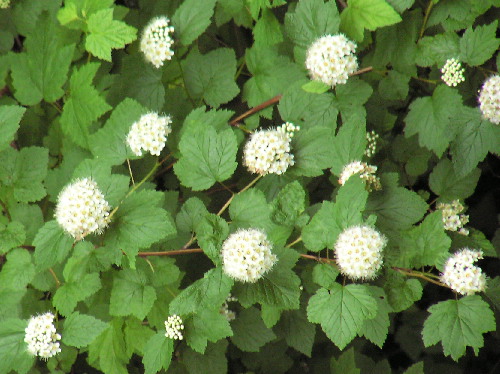 |
Ninebark, Physocarpus opulifolius, is noted for its bark which peels to reveal several layers of various shades. It is this phenomenal that brought about its common name. During the growing season however, the bark is usually difficult to see due to the denseness of the foliage, so fall and winter are the best seasons to observe the bark. The small, whitish flowers grow in dense, rounded clusters. |
| | |
|
Alpine Spirea, Spireae densiflora, is a typical example of a sub-alpine species of shrubs. It rarely grows over 3 ft/1 m high and has clusters of small reddish flowers on the end of the stems. |
| | |
|
Snowberry, Symphoricarpus albus, is a shrub that is most recognizable by its fruit than its flowers. |
| |
|
The flowers of the Snowberry bush are rather small and inconspicuous. |
|
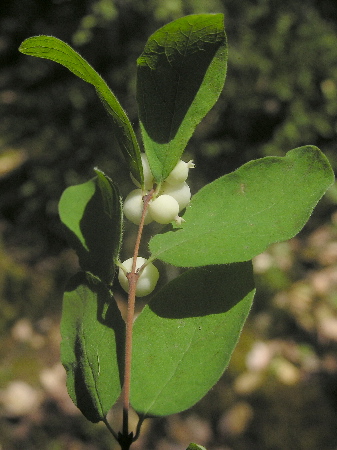 |
|
There is another species of Snowberry called Creeping Snowberry, Symphoricarpus hesperius, which is a low-creeping plant with stems up to 9 ft/3 m long, but are usually less than 18 in/.5 m
This shrub is not as common as the taller Snowberry. |
|
| |
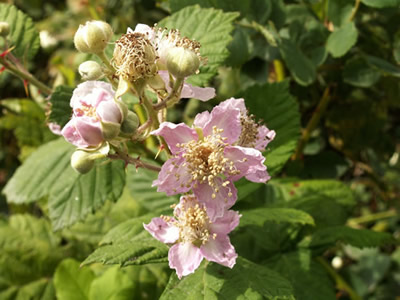 |
__ |
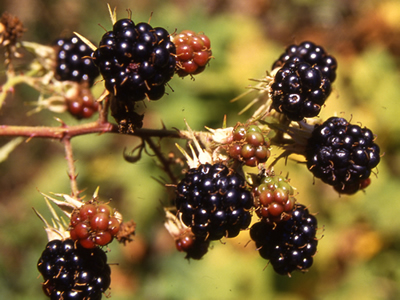 |
Another shrub with fruits that are more popular than the flowers, although the clumps of pinkish rose type flowers are attractive themselves, is the Himalayan Blackberry, Rubus discolor. This shrub is better known by some as Brambles. The ripe black fruits of this huge prickly shrub have been consumed for many years in many lands as this shrub is not native to North America. |
| |
|
|
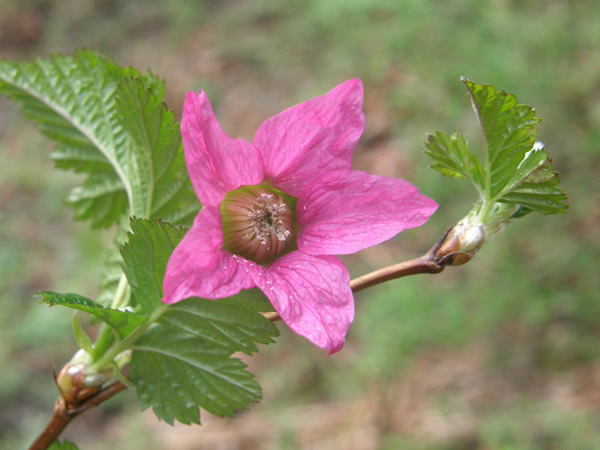 |
Salmonberry, Rubus spectabilis, is found in most forests on the Northwest coast and is a native species. Although Salmonberry has edible fruits, it is not so prolific as the bramble bushes.
The flowers are very attractive with a gorgeous salmon-pink colour. |
|
|
|


